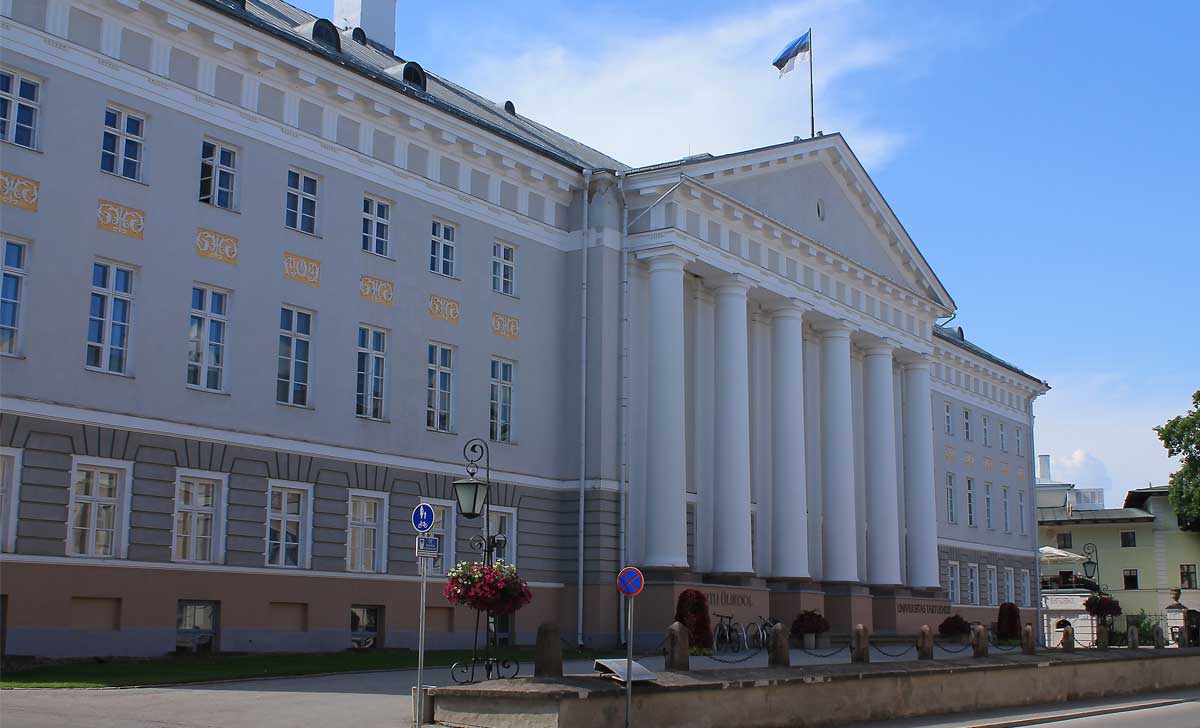
University of Tartu
The University of Tartu is Estonia’s most famous and prestigious university. It prepares specialists across various fields of modern life, including humanities, law, and medicine. The university’s main building is one of Tartu’s most famous landmarks.
The History of the University of Tartu
The history of the University of Tartu dates back to June 30, 1632, when the Swedish King Gustav II Adolf signed the decree founding the Academia Dorpatensis. Over the centuries, the university has changed several names, survived different eras, and witnessed numerous changes in power.
In the early 19th century, the Russian Empire’s authorities deemed it necessary to continue the education of Baltic Germans in their language. Thus, education at the University of Tartu was conducted in German. Between 1820 and 1890, the university was home or workplace to the inventor of electroplating Moritz Hermann Jacobi, the founder of comparative anatomy and embryology Karl Ernst von Baer, and Wilhelm Friedrich Ostwald, a Nobel Prize laureate in Chemistry, among others.
The Estonian national movement, which eventually led to the creation of an independent state, originated at the University of Tartu. In 1884, the Estonian Student Society consecrated the future flag of Estonia – the blue-black-white tricolor. Remarkably, the university continued to provide quality education and prepare top-class specialists throughout this period.
In the spring of 1918, during the German occupation, the Imperial University of Yuryev was transformed into the Landesuniversität in Dorpat by the newly created Baltic Duchy. However, two months after its opening, on November 27, 1918, the university was handed over to Estonia’s Provisional Government.
Peeter Põld was appointed as the head of the institution, and on December 1, 1919, the university commenced operations in Estonian as the University of Tartu of the Estonian Republic. Scientists from Sweden, Finland, and Germany were invited to join the faculty. Many graduates from this period became world-renowned scientists.
The Main Building of the University of Tartu
The main building of the University of Tartu is not only one of Tartu’s landmarks but also the city’s most recognizable symbol. Constructed between 1804 and 1809 according to architect Johann Wilhelm Krause’s design, the building was inaugurated on July 3, 1809.
The University of Tartu’s building is considered a prime example of classical architecture in Estonia. Its spacious main auditorium, known for excellent acoustics, still hosts conferences, ceremonies, and concerts. All significant university events are celebrated here.
Location
Address of the main building of the University of Tartu:
Ülikooli tn 18, Tartu
Museums of the University of Tartu
- Tartu Cathedral Museum (University of Tartu Museum): Introduces the history of the University of Tartu from the 17th century to the present. Visitors can enjoy permanent exhibitions and thematic displays. The Cathedral towers are open for visits during the summer.
- University of Tartu Art Museum: Located in the main university building. The museum’s collection includes various art objects, with a 4,000-year-old Egyptian mummy being the most valuable.
- Museum of Natural History of the University of Tartu: Brings together the long-standing independent museums of zoology and geology. The museum also boasts a large collection of plants and fungi.
- Anatomical Theatre: Currently closed to visitors.
- Tartu Botanical Garden: Features a collection of over 6,500 plant species from different climatic zones.
- Tartu Observatory: The museum’s exhibition introduces the history of astronomy and discoveries made at the University of Tartu.
- Von Bock House: Famous for its facade adorned with portraits.
